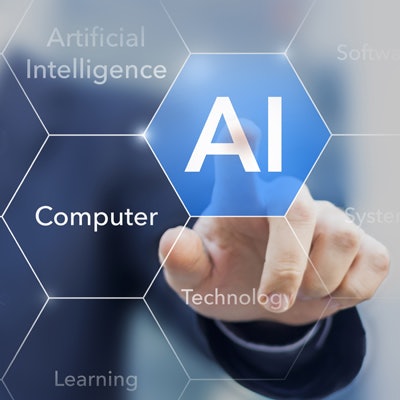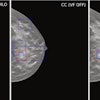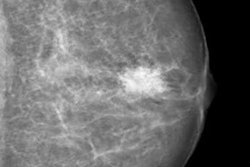
Proper regulation is needed to ensure that artificial intelligence (AI) software is used safely, ethically, and appropriately with protection of patient privacy in radiology, according to Italian researchers in a review article recently published online in Insights into Imaging.
While a good AI application may be powerful, helpful, and valuable, bad or unethical use of the technology may be dangerous. As a result, patients, radiologists, and regulatory authorities must work together to prevent that from happening, according to the researchers led by Dr. Filippo Pesapane of the Università degli Studi di Milano in Milan.
"In a spirit of good cooperation, we must find a balance that provides security, privacy protection, and ethical use of sensitive information to ensure both humane and regulated (and, therefore, responsible) management of the patients," they wrote.
Regulatory issues, policy initiatives
 Dr. Filippo Pesapane of the Università degli Studi di Milano in Milan.
Dr. Filippo Pesapane of the Università degli Studi di Milano in Milan.In the European Union (EU), the current regulatory framework for medical devices has been reformed by the new Medical Device Regulation (MDR) and the new In Vitro Diagnostic Medical Device Regulation (IVDR). The MDR becomes effective on 26 May 2020 while the IVDR will apply as of 26 May 2022, according to the authors (Insights into Imaging, 15 August, 2018).
"This reform originated from the awareness that the existing directives, created in the 1990s, are not fit to deal with new, evolving technologies, including AI systems, and from the identification of some flaws of this regulatory system, for example, lack of control on notified bodies," the authors wrote. "Some of the main characteristics of this reform will be: extended scope to include a wider range of products, extended liability in relation to defective products, strengthening of requirements for clinical data and traceability of the devices, more rigorous monitoring of notified bodies, and improved transparency through making information relating to medical devices available to the public."
Data protection, cybersecurity implications
An ongoing debate is developing in society about the balance between privacy and better user experience achieved by usage of personal data -- especially when it involves sensitive data such as medical information. AI medical devices in radiology and medicine in general should use deep learning to provide data about patients without requiring their personally identifiable information, the authors noted.
"Currently, the use of AI raises two issues relating to the data collected by the devices," Pesapane and colleagues wrote. "On the one hand, data must be protected from the same bodies collecting them. On the other hand, the same data are threatened by cyberattacks to these bodies as well as to the devices themselves."
These threats led the EU to adopt the General Data Protection Regulation (GDPR), which went into effect 24 May 2018, and the Cybersecurity Directive, which took effect on 10 May 2018.
The extended territorial scope and wider rights for data subjects in the GDPR make the regulation more suitable to regulate AI, according to the authors. Meanwhile, the Cybersecurity Directive delineates requirements for EU member states that aim to prevent cyberattacks and to limit their effects.
"Among other things, member states are required to ensure that operators of essential services take appropriate measures to prevent and minimize the impact of incidents and to preserve service continuity (Articles 14(2) and 16(2)), and to ensure that supervisory authorities are notified of incidents without undue delay (Articles 14(3) and 16(3)," the authors wrote.
Accountability and responsibility
AI will play an increasingly important role over the next few years, but needs to be bound by traditional core ethical principles in medicine such as beneficence and respect for patients, according to the authors. It's also important to remember that radiologists do a lot more than just interpret images.
"The duties of a practicing radiologist also include communication of findings, quality assurance, quality improvement, education, interventional radiology procedures, policy-making, and many more tasks that cannot be performed by computer programs," the researchers wrote. "The ability to provide a nuanced interpretation for complex findings, medical judgement, and wisdom of an experienced radiologist is difficult to quantify and even more difficult to simulate with an AI system."
By freeing radiologists up from doing routine and monotonous tasks that can be effectively performed by computers, AI will allow radiologists to have more time to communicate with patients and to confer with colleagues in multidisciplinary teams, according to the researchers.
They noted that accountability for an AI output may be also a simple matter for insurance purposes.
"Ethical and legal responsibility for decision-making will remain in the hand (better, in the mind) of the natural intelligence of physicians," the authors wrote. "From this viewpoint, it's probable that multidisciplinary boards will take the responsibility in difficult cases, considering the information AI provides as relevant but not always conclusive."
A needed technology
Although the application of AI in medicine and radiology still faces several challenges, physicians should accept that it's needed, according to the researchers.
"We need all these technologies and devices that rely on sensitive data to improve patient care and treatment," they wrote.
However, challenges such as the new policy initiatives, the regulation of data protection and cybersecurity, the debate about the accountability and responsibility issues, and the questions about the fiduciary relationship between patients and AI medical systems will have to be addressed as soon as possible, according to the researchers.
"AI-based devices could be built to reflect the ethical standards that have guided other actors in healthcare and could be held to those standards," they wrote. "A key step will be determining how to ensure that they are, whether by means of combination of policy enactment and programming approaches."



















